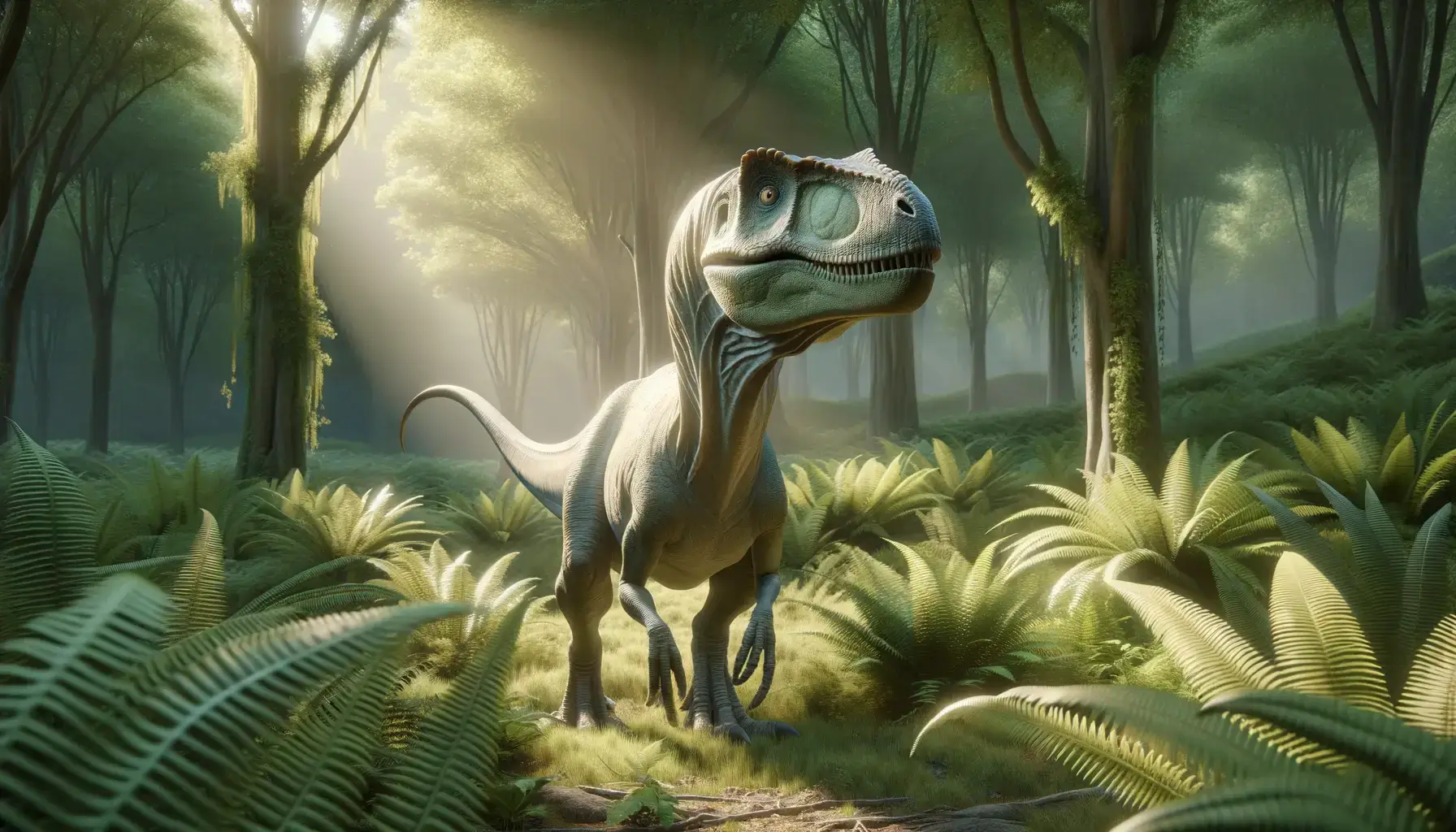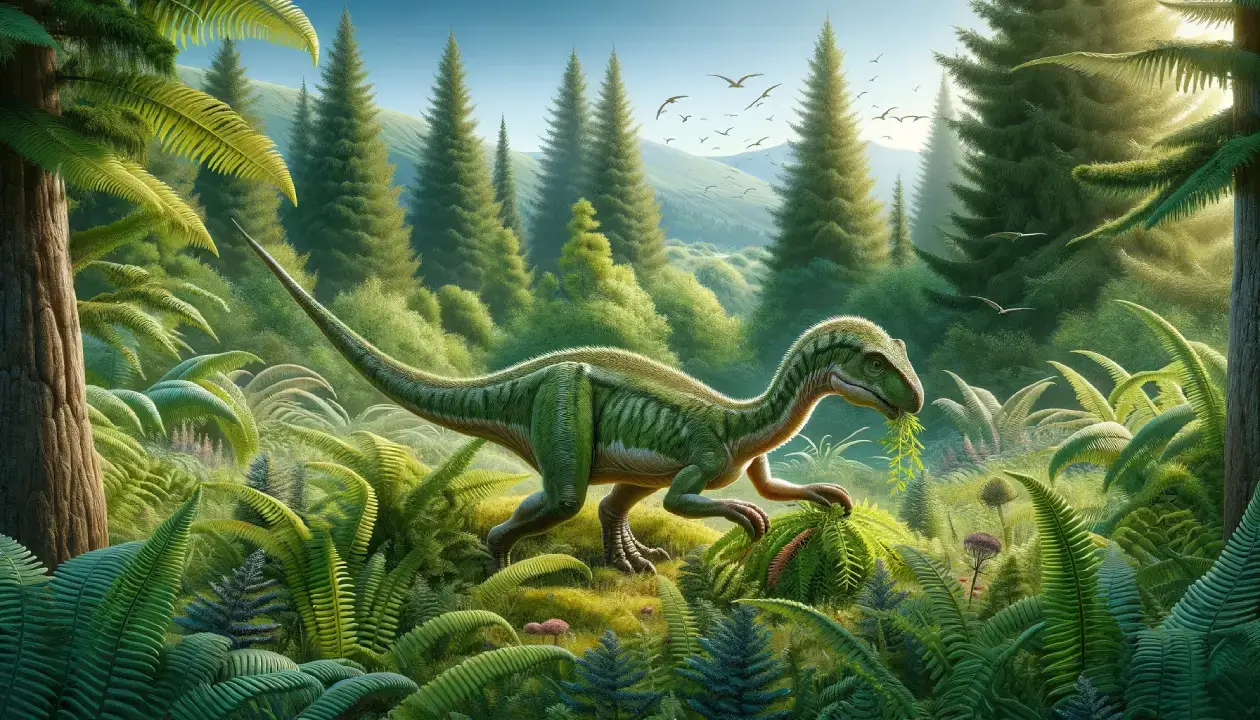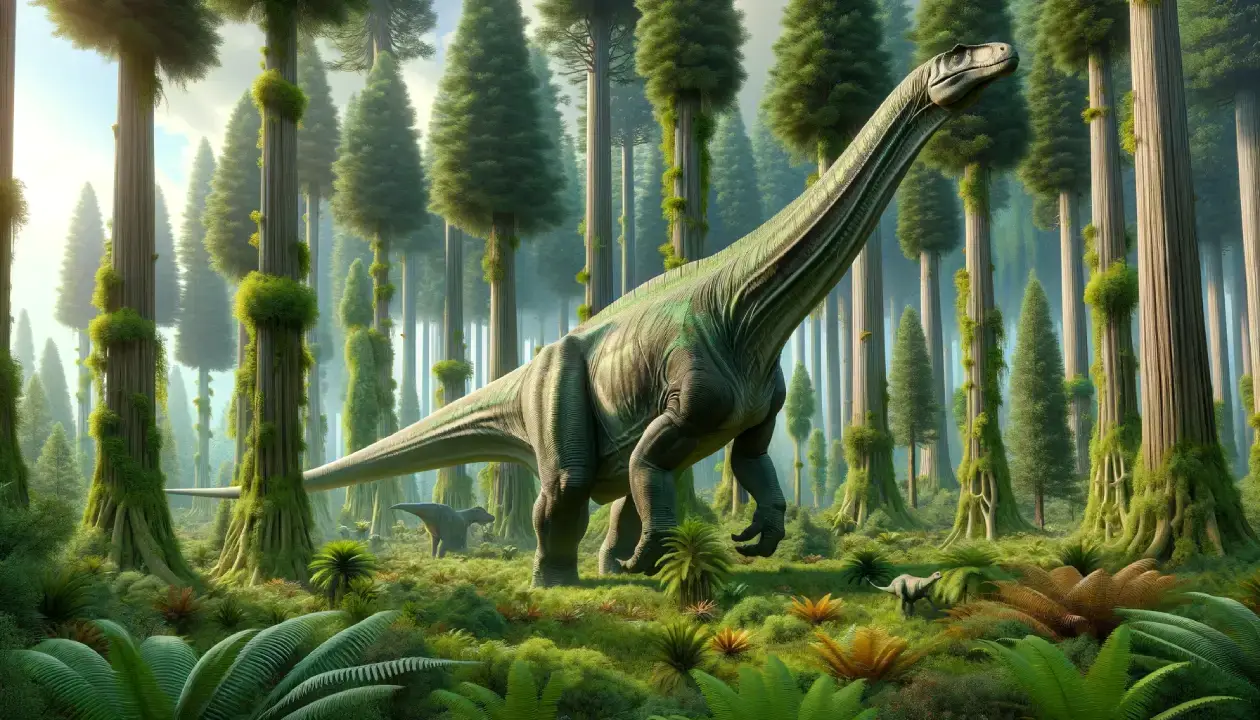Atlascopcosaurus was a small herbivorous dinosaur that lived in what is now Australia during the Early Cretaceous period, about 121 to 97 million years ago. It was one of the first dinosaurs to be discovered in the Dinosaur Cove, a rich fossil site on the southeast coast of Australia. Its name means “Atlas Copco lizard”, after the company that provided equipment and manpower for the excavation. It had a long skull, a narrow snout, and leaf-shaped teeth that were well-adapted to their plant-based diet.
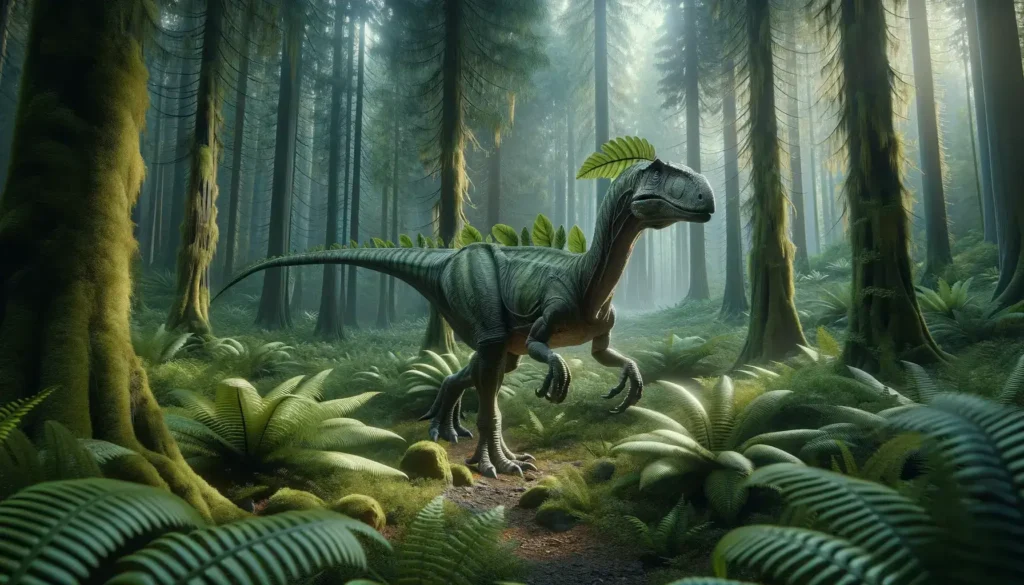
Basic Information
| Feature | Details |
| Time Period | Early Cretaceous (114 million years ago) |
| Diet | Herbivore |
| Length | 2-3 meters (6.5-10 feet) |
| Weight | 125 kilograms (275 pounds) |
| Size | Small |
| Posture | Bipedal |
| Locations | Australia |
| Continent | Australia |
| Type | Ornithopods |
| Habitats | Grasslands, Floodplains |
Description of Atlascopcosaurus
Historical Context
Atlascopcosaurus was the first dinosaur to be discovered and named in Australia, in 1989 by Tom Rich and Patricia Vickers-Rich. It was found on a farm near the coast of Victoria, in layers of the Eumeralla Formation dating from the early Cretaceous, Aptian-Albian. The holotype consists of a piece of the upper jaw, a partial maxilla with teeth, and referred specimens include teeth, another maxilla, and dentaries. Atlascopcosaurus was one of the earliest members of the Iguanodontia, a group of beaked dinosaurs that had hoof-like feet. It may have been related to other iguanodonts from South America and Asia.
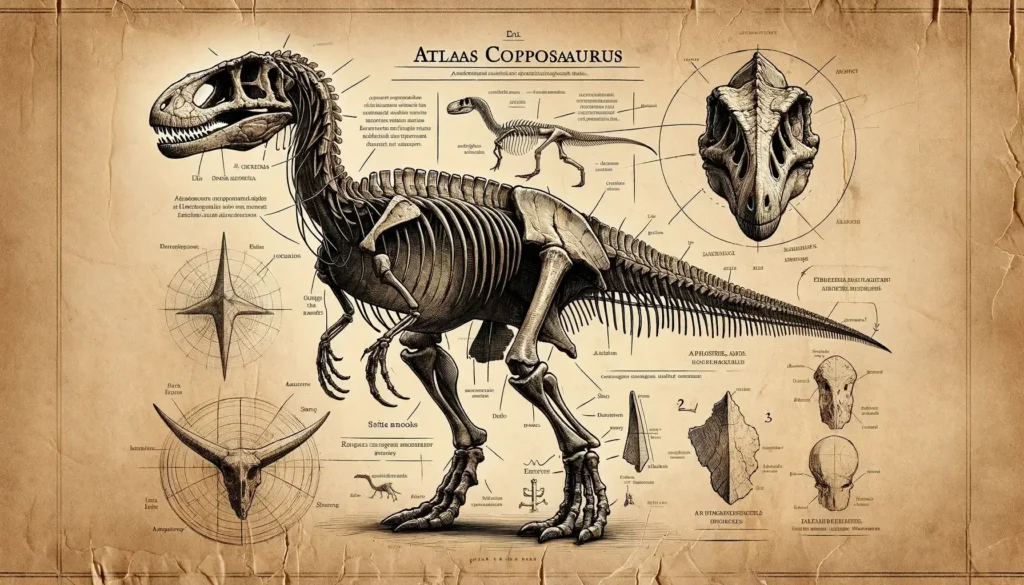
Physical Attributes
Atlascopcosaurus was a small herbivorous dinosaur that belonged to the group of ornithopods, which were characterized by their beaked mouths and hoof-like feet. Atlascopcosaurus had a long neck and a long tail, and a very robust body. Its head was large and broad, with a long snout and a wide muzzle. Its teeth were peg-like and adapted for eating vegetation. Its legs were stout, and its feet had five toes, each tipped with a large claw.
Feeding Habits
Atlascopcosaurus was a herbivore that fed on low-growing plants such as ferns, cycads, and horsetails. It had a broad muzzle that allowed it to take large bites of vegetation. It did not have complex teeth for chewing, so it swallowed its food whole or with minimal processing. It had a large gut that could digest tough plant matter with the help of symbiotic bacteria. Atlascopcosaurus may have used its long neck to browse on different levels of the forest canopy, avoiding competition with other herbivores.
Unique Features
Atlascopcosaurus had several unique features that distinguished it from other ornithopods and dinosaurs. One of them was its size, which was smaller than most other iguanodonts. It reached a length of 2-3 meters (6.5-10 feet) and a weight of 125 kilograms (275 pounds). Another unique feature was its posture, which was more horizontal than vertical. Atlascopcosaurus held its neck and tail parallel to the ground, rather than arching them upward or downward. This posture may have helped Atlascopcosaurus balance its massive body and reduce stress on its bones and muscles.
Movement and Speed
Atlascopcosaurus was not a fast or agile dinosaur. It walked on two legs and had a low center of gravity, which made it stable but also limited its mobility. It could not turn quickly or run for long distances. Its top speed has been estimated to be around 15 km/h (9 mph), similar to a human jogging pace. However, it could make sudden movements when necessary, such as raising its head or swinging its tail.
Cultural Impact
Atlascopcosaurus has not been featured in many books, movies, games, or toys as a popular dinosaur. It is often overshadowed by other ornithopods such as Iguanodon, Parasaurolophus, or Edmontosaurus. However, some examples of its appearances in popular culture are Dinosaur King (2007-2009), a Japanese anime series where it is one of the main characters’ dinosaurs, and Jurassic World Evolution (2018), a video game where it is one of the unlockable dinosaurs.
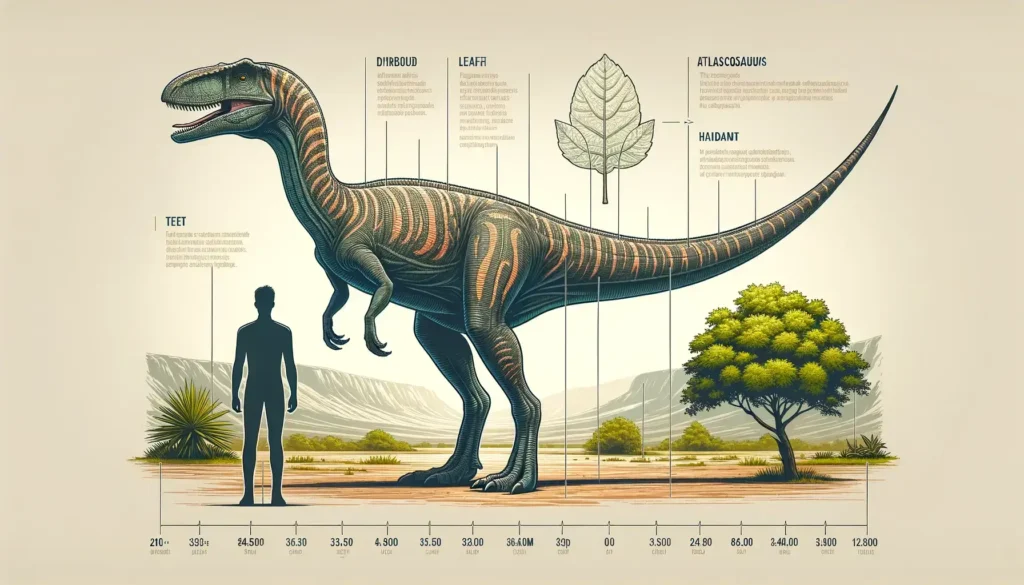
Interesting Facts
- Atlascopcosaurus was the first dinosaur to be discovered and named in Australia, in 1989.
- Atlascopcosaurus lived about 114 million years ago, during the early Cretaceous, Aptian-Albian age, and are now known from fossils in the Eumeralla Formation of Victoria.
- Atlascopcosaurus was one of the earliest members of the Iguanodontia, a group of beaked dinosaurs that had hoof-like feet.
- Atlascopcosaurus had a long neck that was longer than any other ornithopod except for Barilium. The neck had ten vertebrae that were elongated and flexible, allowing Atlascopcosaurus to reach high up in the trees for food.
- Atlascopcosaurus had a robust body that was heavier than most other ornithopods. Its body mass has been estimated to be 125 kilograms (275 pounds), which is equivalent to a large kangaroo or a small horse.
Related Dinosaurs
- Anabisetia: A close relative of Atlascopcosaurus that had a similar size and posture and lived in South America.
- Gasparinisaura: Another close relative of Atlascopcosaurus that had a smaller size and a longer tail and lived in South America.
- Qantassaurus: A more distant relative of Atlascopcosaurus that had a shorter neck and a larger head and lived in Australia.

